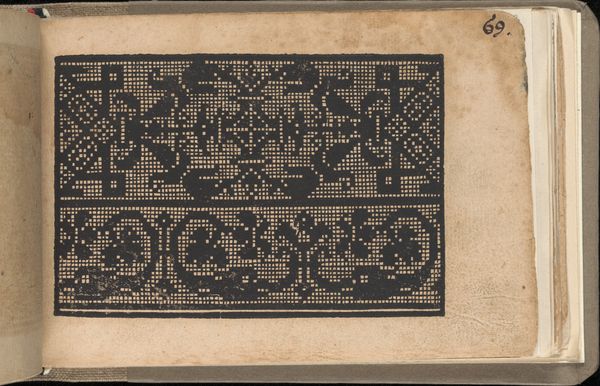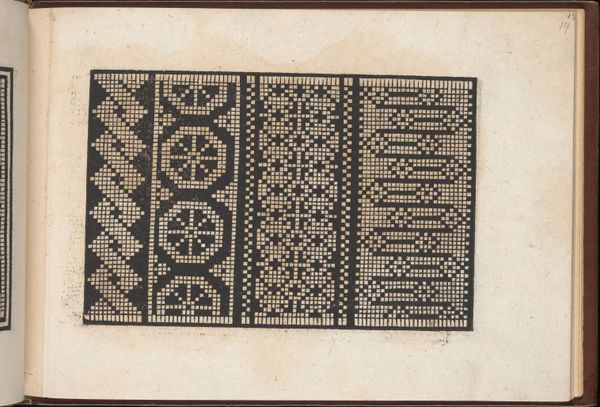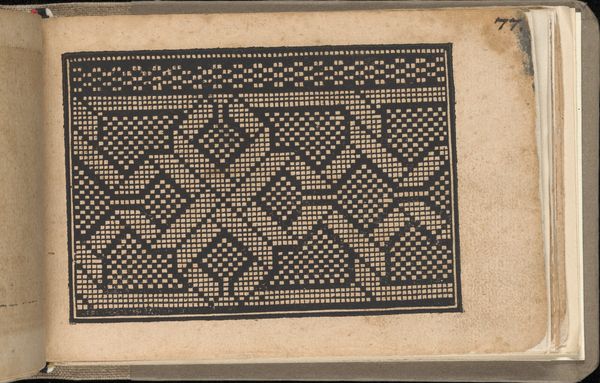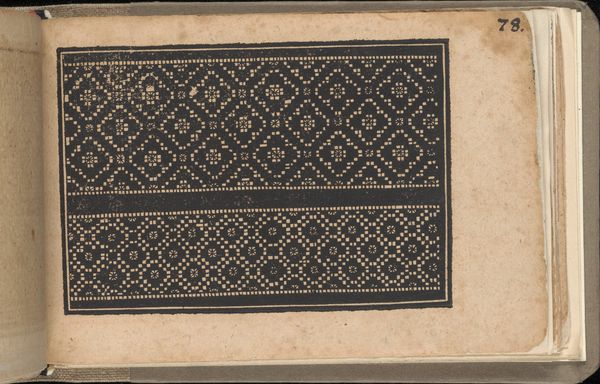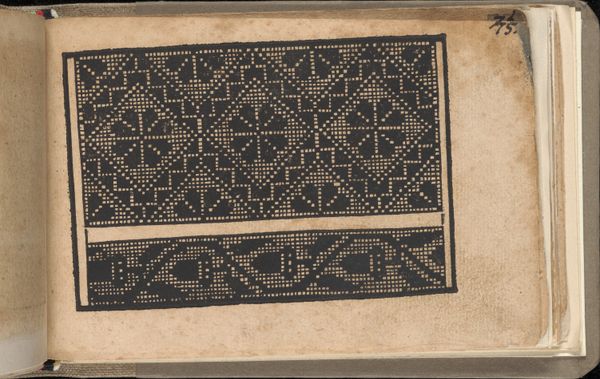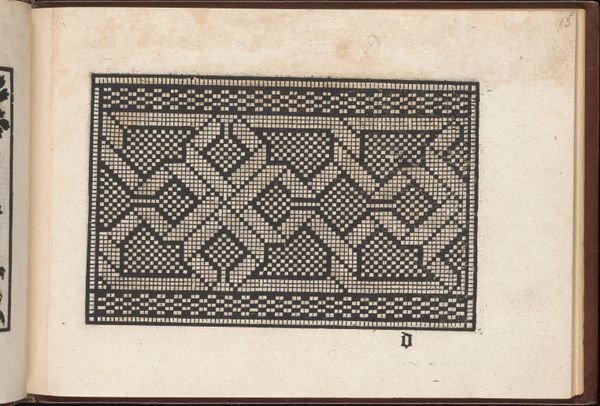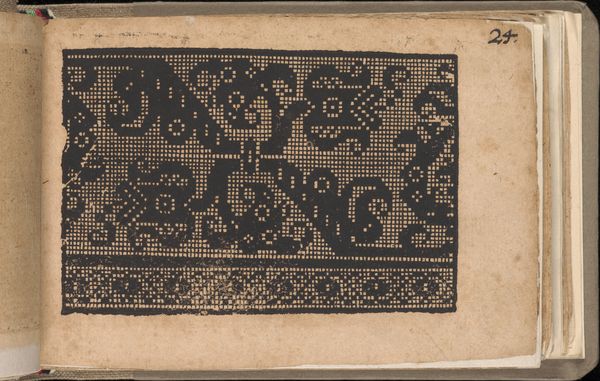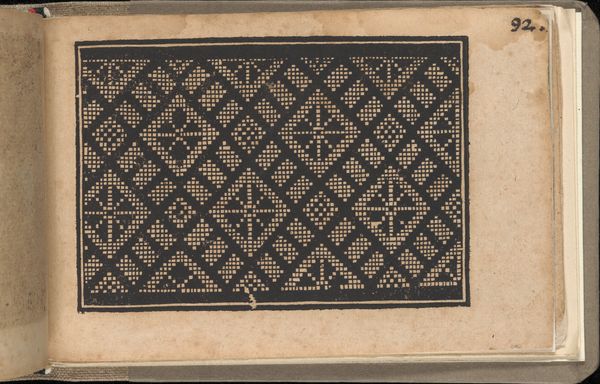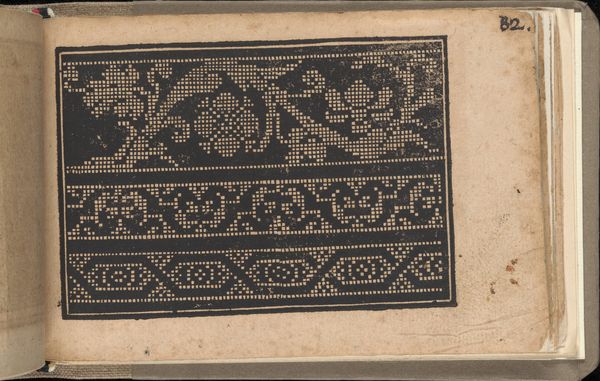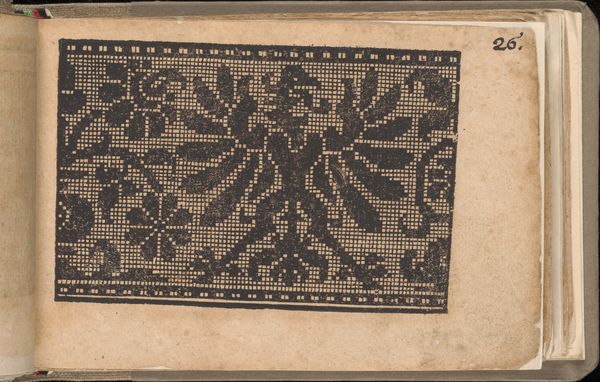
Page from Eyn Newe kunstlich moetdelboech alle kunst (Page 13v) 1532
0:00
0:00
drawing, graphic-art, print, woodcut
#
drawing
#
graphic-art
# print
#
woodcut effect
#
woodcut
#
northern-renaissance
Dimensions: Overall: 5 11/16 x 8 1/16 in. (14.5 x 20.5 cm)
Copyright: Public Domain
This is a page from Eyn Newe kunstlich moetdelboech alle kunst, a pattern book made by Peter Quentel around 1530 using woodcut printmaking. The design is a grid of tiny squares forming a symmetrical, foliate pattern in black and white. Now, what’s fascinating is the relationship between this print and the labor of textile production. Before industrialization, patterns like these would have been painstakingly embroidered by hand. The grid structure here echoes the very structure of woven cloth, and would have served as a template for counted-thread embroidery. Printmaking allowed for the mass dissemination of designs, enabling wider participation in textile arts. It democratized design, moving it beyond the confines of elite workshops and into the hands of a broader public. It is important to remember that while it provides a template, the design must be manually embroidered. Looking at this page, we can appreciate how the mechanization of design through printmaking intersected with the handwork of embroidery, blurring the lines between industrial production and individual craft.
Comments
No comments
Be the first to comment and join the conversation on the ultimate creative platform.


